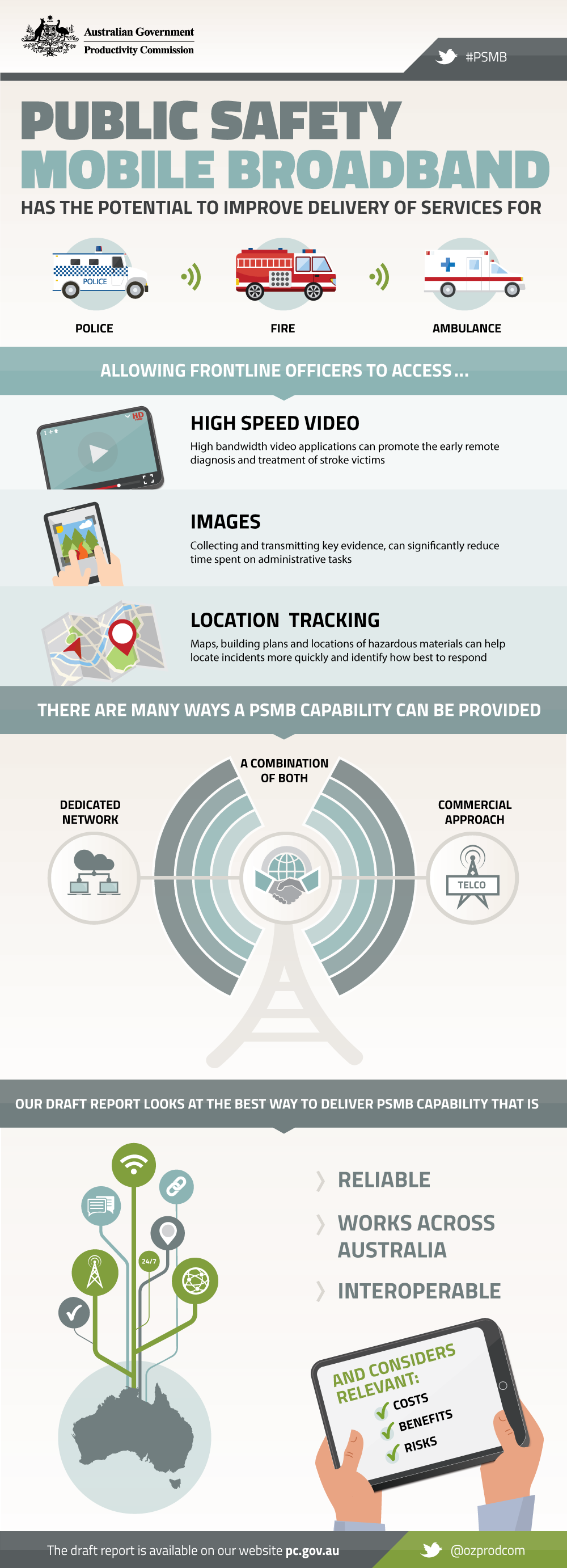Private Telcos best for public safety mobile broadband
Commercial carriers are the most cost effective option for deploying a public safety grade mobile broadband capability to public safety agencies according to a draft Productivity Commission report commissioned by Government and released today.
Mobile broadband technology represents a significant opportunity to save lives and property, improve officer safety and drive productivity gains in the delivery of public safety. It will allow frontline officers to access high-speed video, images, location tracking and much more.
However, its use is unlikely to increase significantly until a 'public safety grade' service is available.
The draft report evaluated options for delivering a public safety mobile broadband capability to Australian public safety agencies, including the construction of a dedicated network, a commercial approach and combinations (or hybrids) of the two.
The Commission found that a commercial option would be significantly lower cost than a dedicated network or hybrid option. 'A commercial option is lower cost because considerable existing infrastructure could be used or shared, meaning significantly less new investment is required,' said Commissioner Jonathon Coppel.
The benefits of each option are not expected to vary markedly, since the options evaluated have been designed to deliver a similar level of PSMB capability. On that basis, the cost evaluation is likely to provide the best guide to net community benefit for each option.
The Commission also considered factors other than cost, such as risks and the need for protocols for sharing information and network capacity among agencies to get the most out of a public safety mobile broadband capability.
'Small-scale trials would provide an opportunity for jurisdictions to gain confidence in a commercial approach, gauge the costs and benefits of the capability more precisely and develop a business case for a wider scale roll out,' said Commissioner Jonathan Coppel.
The Commission is seeking written feedback on the draft report by 28 October 2015. A final report will be provided to the Australian Government in December 2015.


